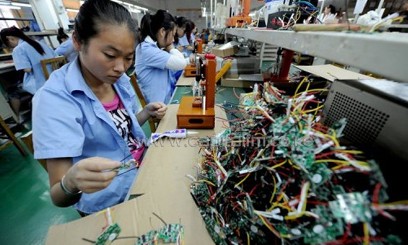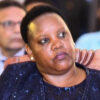“I mean, we’ve been told this many, many, many times by government officials,” he told AFP.
“There’s a lot of problems in China. One is that there’s a perception that the numbers have political incentives embedded in them.”
China calculates monthly and annual data far more quickly than France, a much smaller economy believed to have much higher quality data, he noted.
“So you sort of wonder how they’re able to do it more quickly than the French,” he said. “That leaves all sorts of questions open.”
Economists have long questioned the reliability of numbers provided by local government officials whose career trajectory depends on the performance of their region, creating incentives to make figures look better than the reality.
Toshiya Tsugami, a former Japanese diplomat who now heads a China business consultancy, blames a governmental structure which gives local authorities broad administrative powers but reserves control over assignments and promotions for the centre.
“The personnel ratings are done based mostly on each leader’s performance, and what is most given weight is to what extent each local leader has developed his/her local economy, for which purpose the most used measure is GDP,” he said.
“As a result, local leaders are engaging in fierce competition aiming at higher GDP growth in order to be promoted,” he added. “And since they also handle statistics, there is a strong motivation to dress up the data.”
It is widely known that the sum total of growth as reported by each province is much higher than for the country overall, Pettis noted, “which of course is impossible”.
“I think there is a sense that the National Bureau of Statistics is doing a reasonably good job under very difficult circumstances,” he added. “The local provincial and municipal statistical bureaus, maybe less so.”
The report by Green of Standard Chartered, released earlier this year, estimated economic growth for 2011 and 2012 at 7.2 percent and 5.5 percent respectively, far below official figures of 9.3 percent and 7.8 percent.
Acknowledging the inherent challenges he had with his calculations, he wrote that his figures could at best be described as “guesstimates”, adding: “We have to use official data to question official data.”
Christopher Balding, who teaches at Peking University’s HSBC Business School, argued in a paper this month that skewed consumer price index data, especially for housing, seriously overstates the size of China’s economy.
“Conservatively, correcting for housing price inflation adds approximately one percent to annual consumer price inflation in China, reducing real GDP by more than $1 trillion.”
But experts say the situation is expected to improve as authorities realise they need a better grip on what is happening to create and carry out effective policies.
China’s leaders say they want to change the country’s economic model to one more resembling advanced countries such as the US and Japan, where consumer spending is the key growth engine, and that will result in slower, albeit steadier, annual expansions.
Wang Qinwei, China economist at Capital Economics in London, told AFP: “If the data are not reliable, then any policy and reform decisions will be wrong.”



































